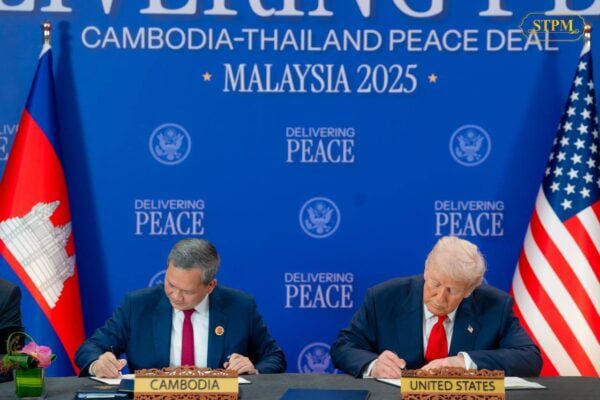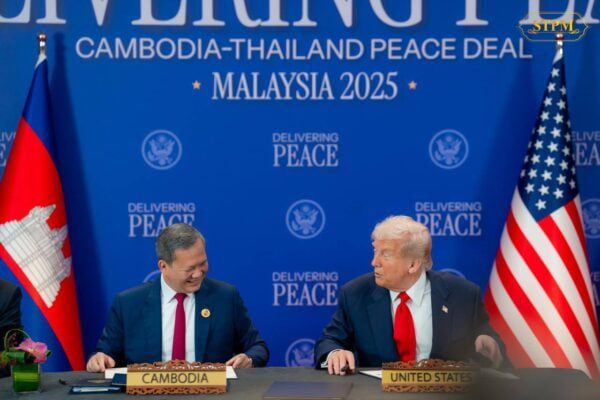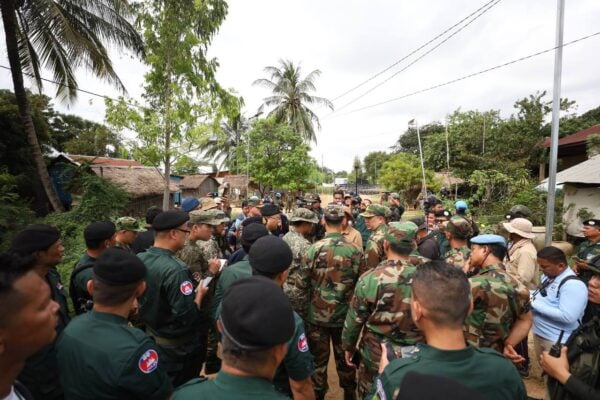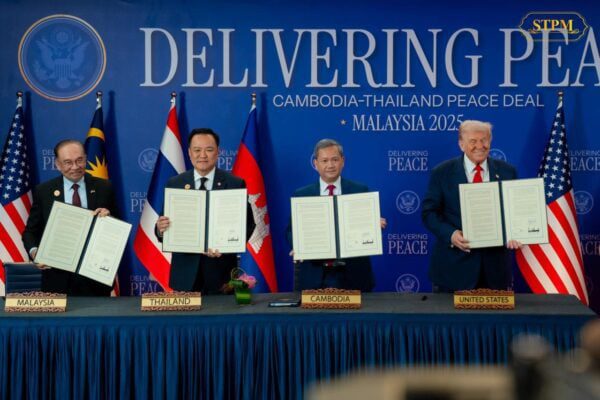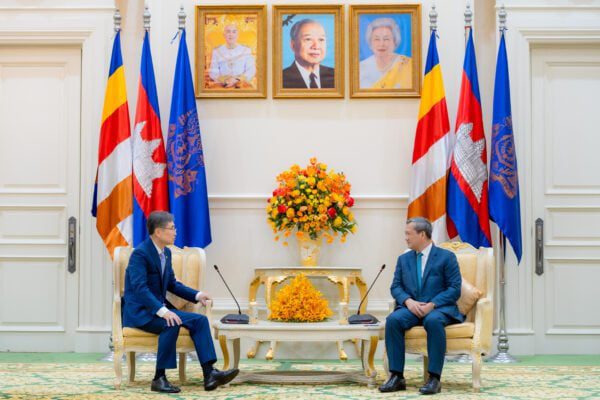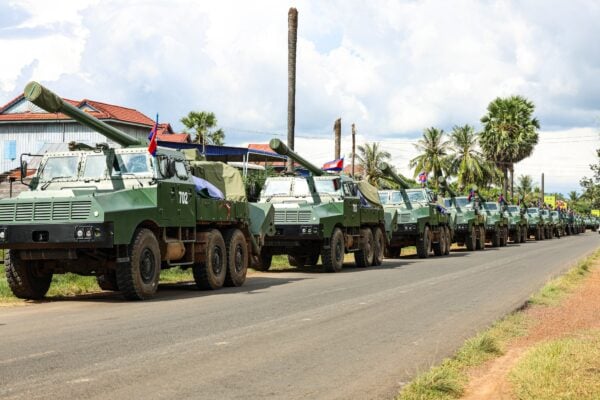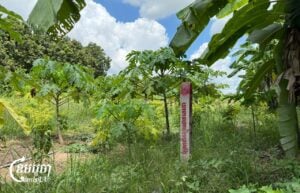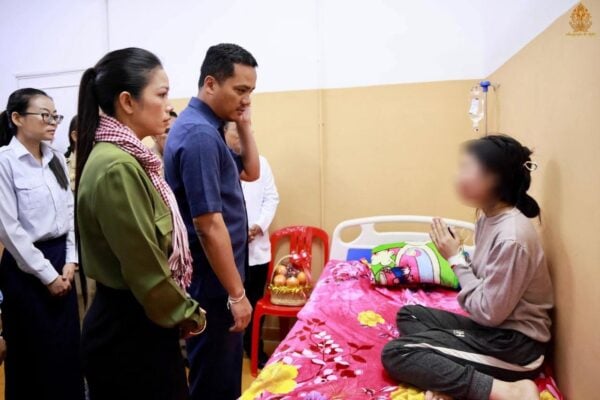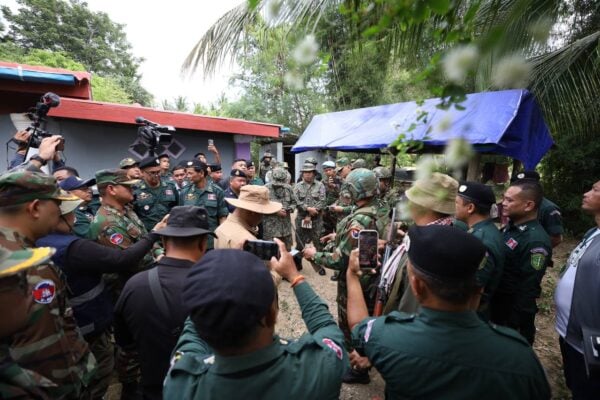China has granted Cambodia 20 million yuan (approximately $2.8 million) humanitarian aid, while reiterating its pledge of “ironclad support” for Cambodia’s sovereignty and developing “self-reliance”. In the midst, analysts caution Beijing’s growing financial footprint—dominated by infrastructure and investment projects—in the country, and issues of debt, transparency and long-term independence.
The commitment was made during Prime Minister Hun Manet’s meeting with the President Xi Jinping during the three-day Shanghai Cooperation Organization Plus Summit in Tianjin, China, from August 30 to September 1.
Political commentators say that China’s role in Cambodia’s development is most visible in infrastructure and energy, in contrast to the U.S. and European assistance. Western support traditionally focuses on health, education, civil society, and institutional reform.
“China will continue to provide collaborative support to the Cambodian people in building and strengthening development capacity through self-reliance, as well as protecting national sovereignty,” Hun Manet posted on August 30.
Xi reaffirmed China’s ties with Cambodia during the talks, with both sides discussing ways to strengthen cooperation across a wide range of key sectors. He also repeated his support for the Cambodia-Thailand ceasefire agreement.
The Ministry of Foreign Affairs and International Cooperation on Monday said China will continue to support the $1.7 billion Funan Techo Canal, which broke ground in August last year, and collaborate in cracking down cybercrimes.

The humanitarian aid will support the reconstruction and livelihood recovery for communities affected by the armed conflict in July, according to spokesperson Meas Sophorn following Hun Manet’s return from China.
Earlier, Chinese ambassador to Cambodia Wang Wenbin posted during both leaders’ meeting China supports Cambodia in maintaining stability, “upholding independence, and achieving development and revitalization”
Arizona State University professor Sophal Ear said Beijing’s message is politically useful in Phnom Penh because it signals high-level backing at a “sensitive time”, that the support is framed as helping Cambodia maintain stability, uphold independence, and reinforces the ruling party’s narrative of guardianship at home even as it highlights the country’s growing reliance on China abroad.
“The reality is more mixed. Chinese finance and diplomatic cover have been significant, but heavy reliance on a single partner narrows Cambodia’s policy space,” the Cambodian-American political analyst said.
Sophal told CamboJA News that genuine independence comes from diversification of ties and from internal reforms, pointing out that self-reliance starts with investing in people, strengthening rule of law and governance, curbing corruption, improving public financial management and procurement, and boosting competitiveness in higher-value industries.
Under Trump’s budget cuts, U.S Agency for International Development (USAID) was dismantled and absorbed into the State Department, resulting in scores of programs being canceled, including $260 million for Cambodia. This impacted NGO rescue efforts of people trapped in Cambodia’s scam industry, which trafficked about 150,000 people.
He said while the U.S cancelled funding of international development programs in Cambodia, which were linked to governance and civil rights, Chinese concessional loans, and commercial projects became more prominent.
“Chinese funds can offset the lost Western grants numerically [but] they do not automatically substitute human rights capital and institutional pillars that underpin long-term development,” Sophal said.
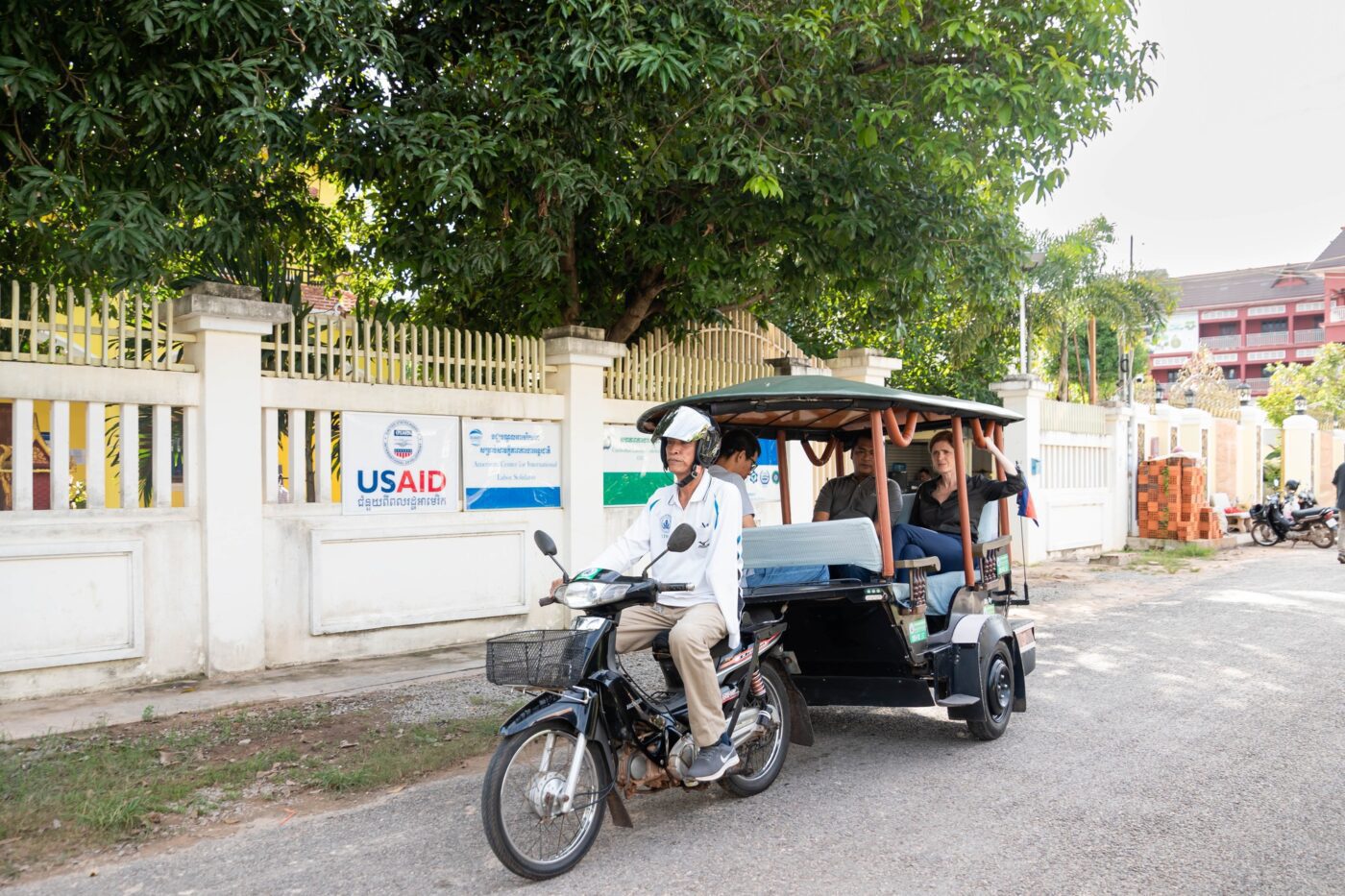
Outstanding loans to Cambodia was about $4 billion as of 2024, with China accounting for one third of the total public debt, making it the largest creditor. Its loans are equivalent to one-tenth of Cambodia’s gross domestic product (GDP), Reuters reported in March.
Political commentator, Ro Vannak, opined that China is the largest foreign direct investor for Cambodia, which navigates between China and other partners. Though it brings clear benefits, there are also risks of “overreliance” assuming debt, political expectation, and unequal trade relationships become more pronounced.
“China has exerted a significant influence on Cambodia’s infrastructure and connectivity,” he said. “Indeed, Chinese support has increasingly taken the place of recent reductions in U.S. aid to Cambodia, although not in a direct substitution manner,” Vannak said.
He noted that Chinese support has filled gaps left by recent U.S. aid cuts, though not in a direct substitution manner.
After the U.S. suspended demining and child welfare funding in early 2025, Beijing stepped in with grants for mine clearance, including equipment and training, and programs on child literacy and nutrition, Sophal said. While it is not at the scale of past USAID investments, China presents them as “as proof” that Beijing can fill the aid gap left by the U.S.
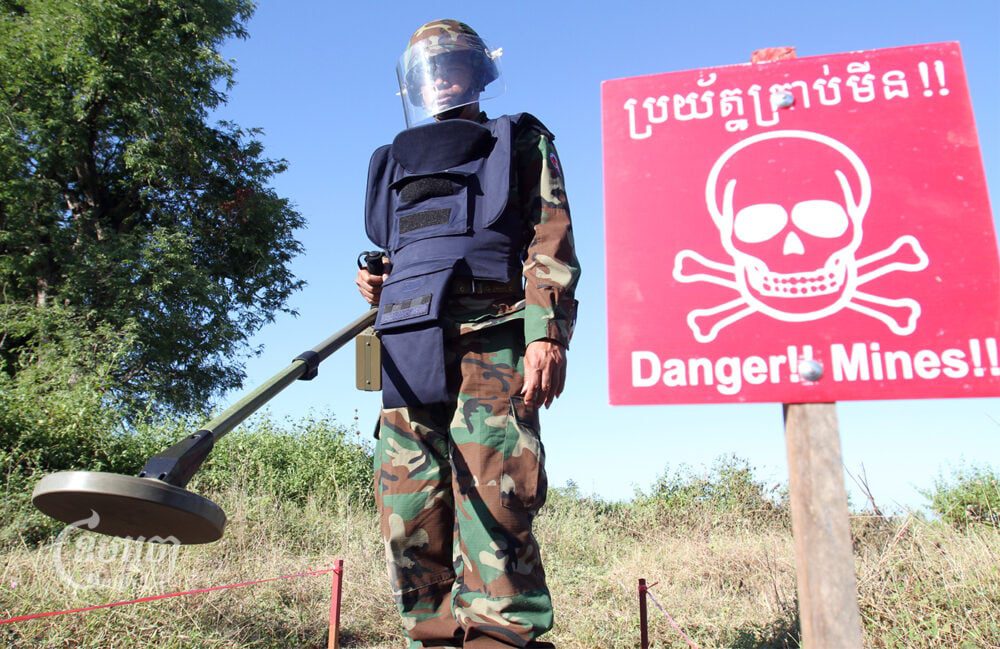
Last March, it partnered with UNICEF and Cambodia to help vulnerable children in remote and underserved areas, with a focus on newborns, children with disabilities, malnourished children, and ethnic minorities.
All of this while continuing to anchor major infrastructure projects such as the Funan Techo Canal and clean energy initiatives. “China has effectively addressed immediate funding needs, particularly in visible and non-political projects, [although] Cambodia continues to experience a deficit in support for democracy and human rights efforts,” Vannak said.
He pointed out that the main source of fundings were for infrastructure, for roads, bridges across Mekong river, railway, hydropower, expressway and industrial parks such as special economic zones (SEZs), as well as “favorable” loans to Cambodia.
Moeun Tola, executive director of the Center for Alliance of Labor and Human Rights (CENTRAL), mentioned that Chinese aid cannot replace U.S. funding, which not only supported the state but also NGOs working on human rights, democracy, and independent media.
“I cannot see China’s aid as a substitute for U.S. funding, because U.S. support reaches all stakeholders, including civil society,” he said, noting that Chinese assistance is largely directed toward government infrastructure projects.
NGO rights group Adhoc president Ny Sokha said Chinese aid has focused on state-led infrastructure projects; it has not extended organization to supporting human rights or democracy. “China is not a democracy like Cambodia, and we have never seen it provide assistance to strengthen democratic institutions.”
Sokha said foreign assistance is vital but cautioned that Cambodia must weigh the conditions attached to such funding to avoid compromising its independence. “The country should broaden cooperation not only with China but also the European Union and the United States.”
The analysts note that China balances its close partnership with Cambodia and broader interest in regional stability by backing Phnom Penh diplomatically while “quietly encouraging” restraint and negotiation. This approach helps stabilize the Cambodia–Thailand border tensions without Beijing becoming “directly entangled in the intra-ASEAN dispute”.
“Its [China] close strategic partnership with Cambodia provides Phnom Penh with diplomatic backing and a sense of security that can influence its approach toward Thailand,” Vannak said.
At the same time, China’s broader interests in regional stability—particularly safeguarding trade and Belt and Road projects—mean it quietly favors restraint and negotiation over escalation. China’s presence serves as a stabilizing backdrop that discourages prolonged conflict, he added
China provided humanitarian help to ease people’s burden due to the border tensions, while Japan and the European Union granted $1.8 million and €700,000 (approximately $816,000), respectively, to provide cash aid, mental health support. Although there was no direct government aid, the U.S provided funds through IOM and UNICEF.
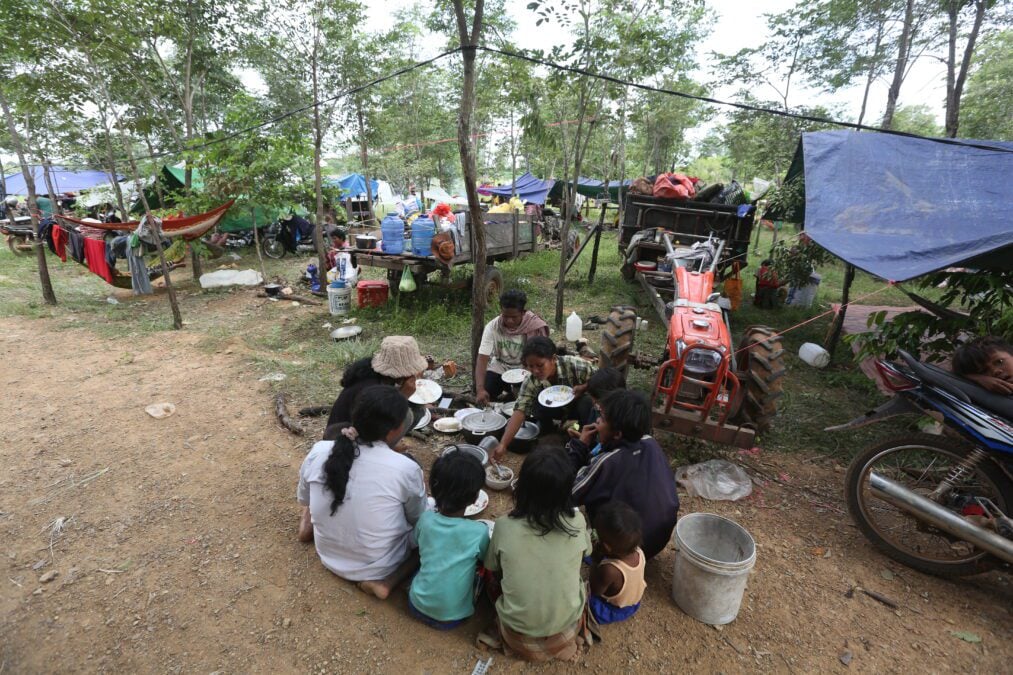
Foreign Affairs and International Cooperation Ministry spokesperson Chum Sounry, and government spokesperson Pen Bona did not respond.
In an email response to CamboJA News, U.S. Embassy in Cambodia spokesperson said they continue to work with Cambodia, with whom it has 75 years of bilateral ties, to advance a shared vision of a “free, prosperous, secure, and resilient Indo-Pacific”, focusing on military to military cooperation and ways to raise economic engagement and trade.
The U.S has provided foreign assistance for health and elimination of infectious diseases, such as malaria, as well as demining activities over the decades, calling itself the “largest demining donor” in Cambodia, with over $220 million allocated since 1993.
“Just this year, the United States provided $12 million to make the land safer for Cambodian families to drive economic development, opening up newly cleared land for agriculture and tourism activities,” the spokesperson said.
They also want to see the ceasefire hold and turn into a durable and lasting peace, noting that President Trump and Secretary Marco Rubio expect Cambodia and Thailand to honor their commitments to end this conflict.
“We continue to support the Malaysian government as it works closely with the governments of Cambodia and Thailand to secure a ceasefire Terms of Reference and implement an ASEAN-led observation mechanism on both sides of the border,” they said.
The Chinese embassy in Phnom Penh did not respond.



